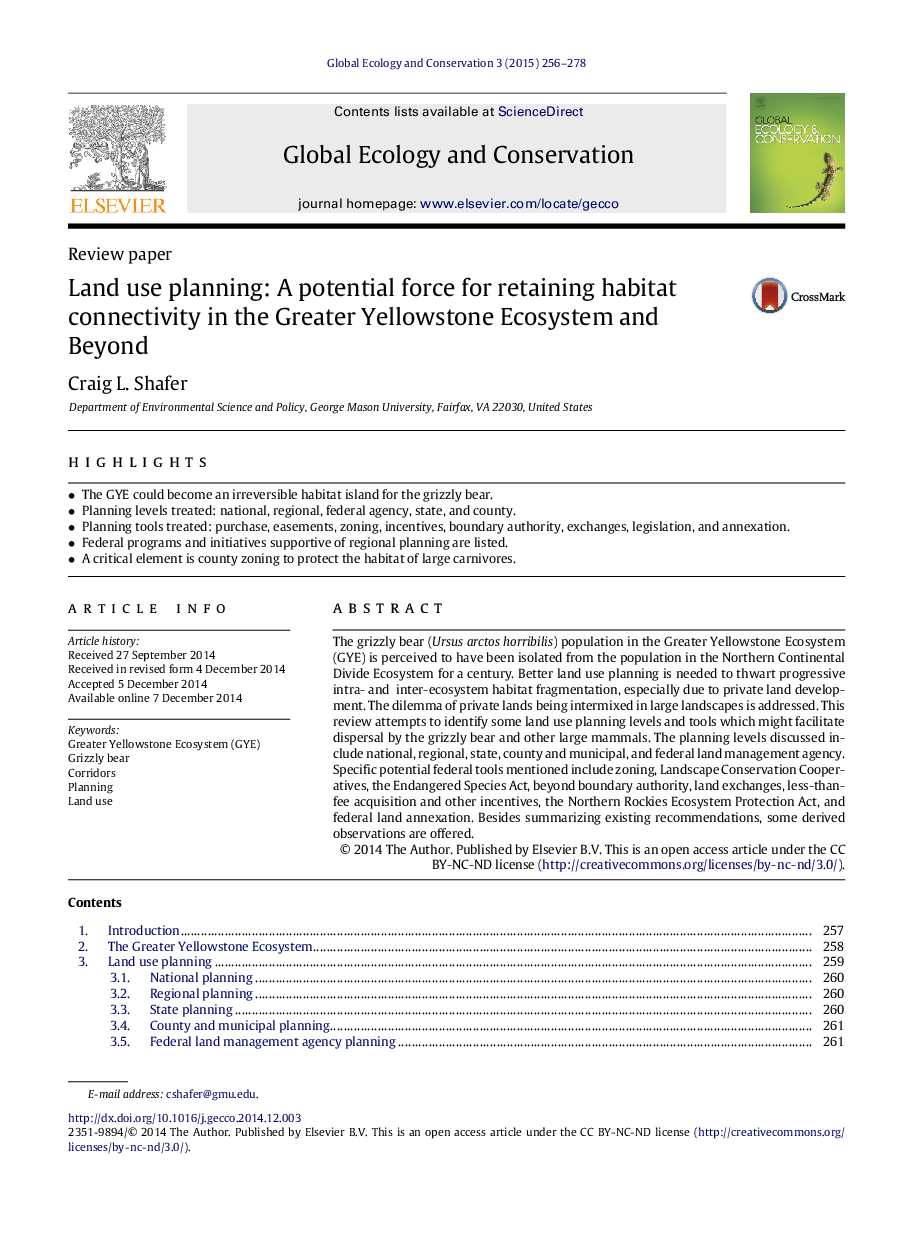| کد مقاله | کد نشریه | سال انتشار | مقاله انگلیسی | نسخه تمام متن |
|---|---|---|---|---|
| 4379617 | 1617664 | 2015 | 23 صفحه PDF | دانلود رایگان |
• The GYE could become an irreversible habitat island for the grizzly bear.
• Planning levels treated: national, regional, federal agency, state, and county.
• Planning tools treated: purchase, easements, zoning, incentives, boundary authority, exchanges, legislation, and annexation.
• Federal programs and initiatives supportive of regional planning are listed.
• A critical element is county zoning to protect the habitat of large carnivores.
The grizzly bear (Ursus arctos horribilis) population in the Greater Yellowstone Ecosystem (GYE) is perceived to have been isolated from the population in the Northern Continental Divide Ecosystem for a century. Better land use planning is needed to thwart progressive intra- and inter-ecosystem habitat fragmentation, especially due to private land development. The dilemma of private lands being intermixed in large landscapes is addressed. This review attempts to identify some land use planning levels and tools which might facilitate dispersal by the grizzly bear and other large mammals. The planning levels discussed include national, regional, state, county and municipal, and federal land management agency. Specific potential federal tools mentioned include zoning, Landscape Conservation Cooperatives, the Endangered Species Act, beyond boundary authority, land exchanges, less-than-fee acquisition and other incentives, the Northern Rockies Ecosystem Protection Act, and federal land annexation. Besides summarizing existing recommendations, some derived observations are offered.
Journal: Global Ecology and Conservation - Volume 3, January 2015, Pages 256–278
